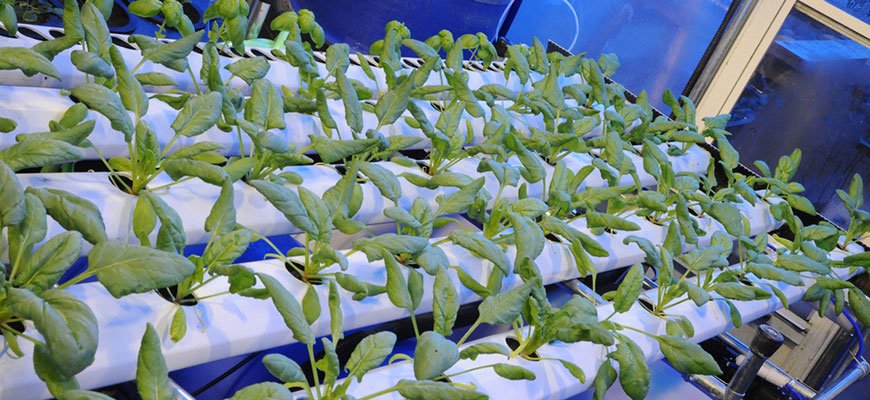So you’ve decided to embark on a journey to grow your own hydroponic spinach? Well, you’ve come to the right place! In this ultimate guide, we’ll walk you through everything you need to know about growing hydroponic spinach successfully. From setting up your hydroponic system to choosing the right spinach variety and providing the optimum conditions, we’ve got you covered. Whether you’re a beginner or a seasoned hydroponic gardener, get ready to learn all the tips and tricks to nurture vibrant, leafy greens right at home. Let’s get started!
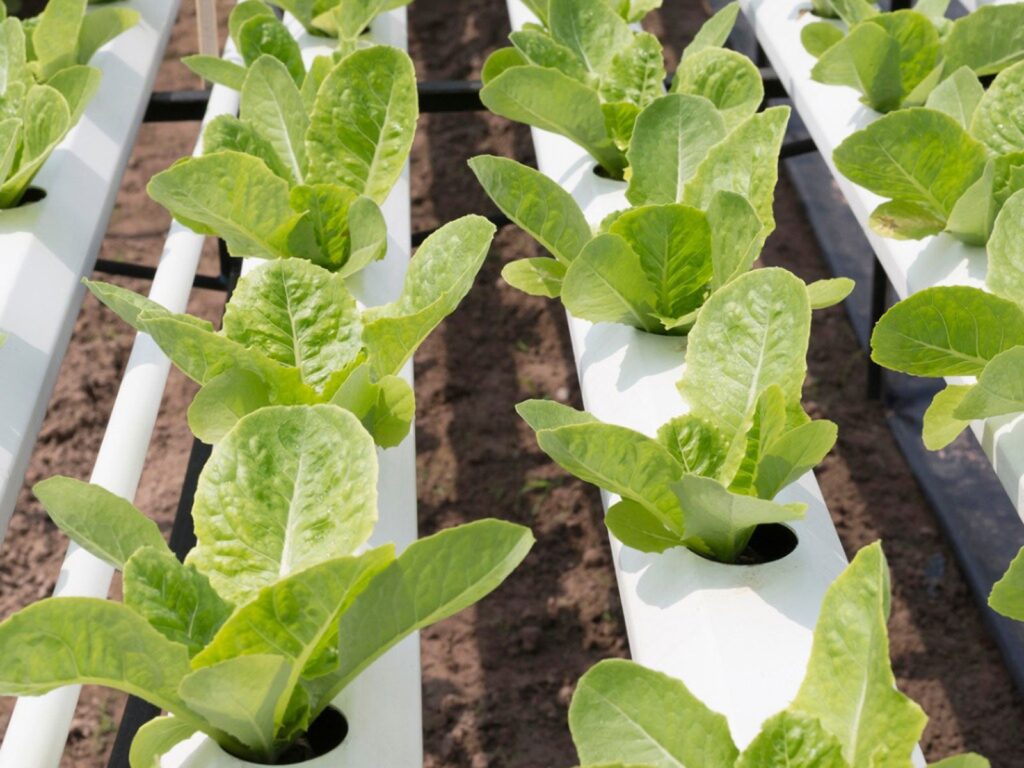
Choosing the Right Spinach Variety
Determining the Ideal Spinach Variety for Hydroponic Growth
When it comes to growing hydroponic spinach, choosing the right variety is crucial for successful cultivation. Various spinach varieties have different growth characteristics, taste profiles, and nutritional content. Some of the factors to consider when selecting a spinach variety for hydroponics include leaf size, growth speed, and disease resistance. Determine your preferences in terms of taste and appearance as well. For example, if you prefer baby spinach with tender leaves, opt for varieties specifically bred for this purpose. Research and consult with local experts to identify which spinach varieties thrive in your area.
Considerations for Spinach Variety Selection
Apart from growth characteristics and taste, it’s important to consider the space available in your hydroponic system. Some spinach varieties have large leaves that may require more room to spread out, while others are more compact and suitable for smaller setups. Take into account the space requirements and growth habits of different varieties. Additionally, consider the specific purpose of your spinach cultivation. Will you be using it for fresh salads and sandwiches, or are you planning to freeze or can it for later use? Choosing a variety that meets your intended usage will ensure optimal results.
Creating the Ideal Hydroponic System
Understanding the Basics of Hydroponics for Spinach
Hydroponics is a method of growing plants without soil, using nutrient-rich water as the medium instead. Spinach thrives in hydroponic systems due to its ability to absorb nutrients efficiently through its roots. Familiarize yourself with the fundamentals of hydroponics, including the different types of hydroponic systems and their advantages and disadvantages. This knowledge will help you make an informed decision about which system is best suited for growing hydroponic spinach.
Choosing the Right Hydroponic System for Spinach
There are several hydroponic systems that can be used for cultivating spinach. Some popular options include nutrient film technique (NFT), deep water culture (DWC), and vertical farming systems. Each system has its own unique set of features and benefits. Factors to consider when selecting a system include your available space, budget, and level of expertise. It’s important to choose a hydroponic system that aligns with your specific needs and resources to ensure successful spinach growth.
Setting Up the Hydroponic System for Optimal Spinach Growth
Once you have chosen the hydroponic system, it’s time to set it up for optimal spinach growth. Start by assembling and installing the necessary components, such as the growing trays, pumps, timers, and lighting systems. Ensure that the system is properly balanced and all connections are secure. Before introducing the spinach plants, thoroughly clean and sanitize the system to prevent the growth of harmful bacteria or pathogens. This initial setup is crucial for creating a conducive environment for your hydroponic spinach to thrive.

Preparing the Growing Environment
Selecting the Right Location for Hydroponic Spinach
Choosing the right location for your hydroponic spinach setup is essential for its overall success. The selected location should receive adequate sunlight, or alternatively, have access to artificial lighting if growing indoors. Consider factors such as temperature fluctuations, humidity levels, and ventilation. Avoid placing the hydroponic system in areas that are prone to extreme temperature variations, such as near air conditioning vents or direct heat sources. Aim for a stable environment that promotes optimal spinach growth.
Setting Up the Grow Room or Greenhouse
If you are growing hydroponic spinach indoors, setting up a dedicated grow room or greenhouse will provide the ideal controlled environment. Ensure that the space is properly insulated to maintain consistent temperatures. Consider investing in reflective materials to maximize sunlight utilization. Install appropriate ventilation systems to regulate airflow and minimize the risk of stagnant air, which can lead to the development of pests or diseases. Creating a well-designed and organized grow room or greenhouse will contribute to the success of your hydroponic spinach cultivation.
Providing Adequate Lighting for Spinach Growth
Spinach requires sufficient light for photosynthesis and healthy leaf development. If growing hydroponic spinach indoors, it is crucial to provide artificial lighting that mimics natural sunlight. LED grow lights are highly recommended due to their energy efficiency and ability to provide the right light spectrum for optimal plant growth. Position the lights at an appropriate distance from the plants to prevent burning or stunted growth. Regularly monitor the intensity and duration of the light to ensure your hydroponic spinach receives the proper amount of lighting.
Regulating Temperature and Humidity Levels for Spinach
Regulating temperature and humidity levels within the hydroponic system is vital for spinach growth. Optimal temperature ranges for spinach cultivation typically fall between 60-70°F (15-21°C). Ensure that the grow room or greenhouse maintains a consistent temperature throughout the day and night. Humidity levels should be kept around 50-60% to prevent excessive moisture or dryness. Use a humidifier or dehumidifier as needed to achieve the ideal humidity range. Monitoring and maintaining appropriate temperature and humidity levels will help prevent stress on your hydroponic spinach plants.
Prepping the Nutrient Solution
Understanding the Nutritional Requirements of Hydroponic Spinach
In a hydroponic system, plants rely on a nutrient-rich solution for their growth and development. It is essential to understand the specific nutritional requirements of hydroponic spinach to provide the appropriate balance of nutrients. Key macronutrients needed by spinach include nitrogen, phosphorus, and potassium. Additionally, micronutrients such as iron, calcium, and magnesium are equally important for healthy spinach growth. Conduct regular water and nutrient solution testing to ensure that your spinach plants are receiving the necessary elements for optimal development.
Creating a Balanced Nutrient Solution for Spinach
To create a balanced nutrient solution for hydroponic spinach, you can either purchase pre-formulated hydroponic nutrient mixes or mix your own using individual nutrient salts. Follow the instructions provided by the manufacturer or consult reputable sources for recommended nutrient concentrations. Keep in mind that spinach has different nutrient requirements at various growth stages. Gradually adjust the nutrient solution strength as the plants progress from seedlings to mature plants. Regularly monitor and adjust the nutrient solution to maintain optimal nutrient levels for your hydroponic spinach.
Choosing the Right Fertilizers and Supplements for Hydroponic Spinach
In addition to the primary nutrient solution, hydroponic spinach can benefit from supplementary fertilizers and supplements. These products can address specific deficiencies or promote overall plant health. Organic fertilizers or supplements can be used, provided they are specifically formulated for hydroponic systems. An example would be seaweed extract, which can enhance plant growth and improve resistance to diseases. Research different options and consult experienced hydroponic growers to determine which fertilizers or supplements are suitable for your specific spinach cultivation needs.
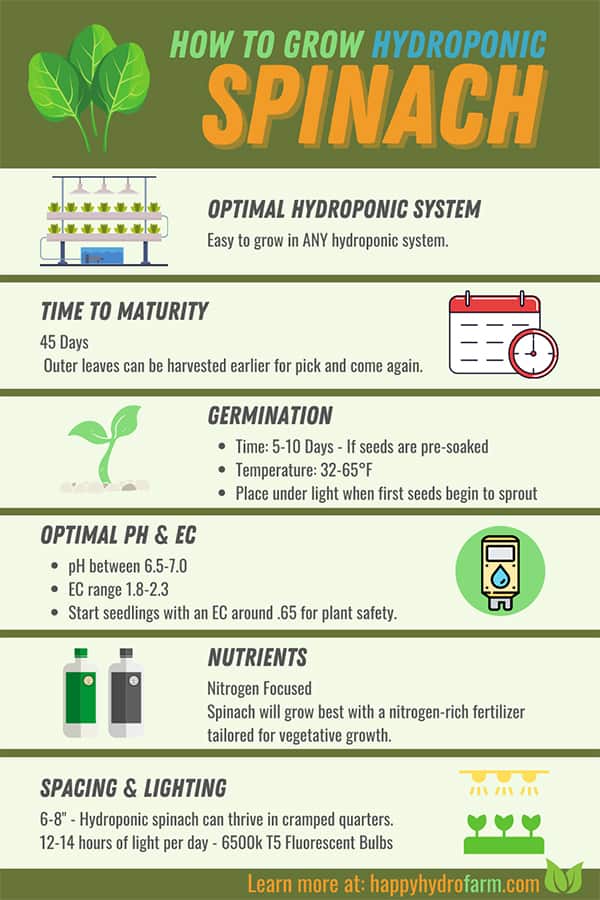
Germinating Spinach Seeds
Preparing Spinach Seeds for Germination
Before germinating spinach seeds, it is important to properly prepare them for optimal results. Start by selecting high-quality seeds from reputable suppliers. To enhance germination rates, you can soak the seeds in room temperature water for a few hours or overnight. Additionally, scarification, which involves gently scraping or nicking the seed coat, can help speed up the germination process. Ensure that you are working with clean and sanitized equipment to minimize the risk of introducing pathogens.
Germination Techniques for Hydroponic Spinach
There are various germination techniques that can be employed for hydroponic spinach. One common method is using a germination tray or cube. Fill the tray or cube with a sterile germination medium, such as rockwool or coconut coir. Place the prepared spinach seeds on the medium, ensuring proper spacing between each seed. Maintain the optimal germination temperature, usually around 70°F (21°C), and provide consistent moisture until the seeds sprout. Regularly monitor the germination process and adjust environmental conditions as needed to support successful seedling emergence.
Optimal Conditions for Successful Germination
To ensure successful germination, it is important to provide the optimal conditions for hydroponic spinach seeds. Maintain a warm and consistent temperature throughout the germination period. Keep the medium moist but avoid overwatering, as excessive moisture can lead to fungal growth or root rot. A humid environment can be created by covering the germination tray or cube with a plastic dome or placing it inside a humidity dome. Monitor the germination progress closely and make adjustments to the environmental conditions, if necessary, to promote healthy and vigorous seedling growth.
Transplanting Seedlings into the Hydroponic System
Preparing the Transplanting Medium
Before transplanting hydroponic spinach seedlings, it is important to prepare the transplanting medium. The medium should be sterile to minimize the risk of disease or pathogens affecting the young plants. Common transplanting mediums for hydroponic systems include rockwool cubes, clay pellets, or coco coir. Ensure that the medium is properly rinsed and saturated with the nutrient solution before transplanting. Take care not to damage the delicate roots of the seedlings during the transplanting process.
Transplanting Techniques for Hydroponic Spinach
When transplanting hydroponic spinach seedlings, gently remove them from the germination tray or cube and place them into the prepared transplanting medium. Ensure that the roots are fully covered and supported by the medium to provide stability. Plant spacing is crucial for proper air circulation and to prevent overcrowding, which can lead to the development of diseases. Follow the recommended spacing guidelines for your chosen spinach variety. After transplanting, carefully adjust the water and nutrient solution levels to accommodate the newly transplanted seedlings.
Ensuring Proper Root Development
Proper root development is essential for the overall health and growth of hydroponic spinach plants. After transplanting, monitor the root growth by periodically checking the quality and length of the roots. Healthy roots should be white or off-white, firm, and exhibit branching. If roots appear brown, mushy, or discolored, it may indicate a root rot or nutrient imbalance problem. Maintain the proper water and nutrient levels, as well as the optimal temperature and humidity, to promote robust root development. Healthy roots will provide a strong foundation for your hydroponic spinach plants to thrive.
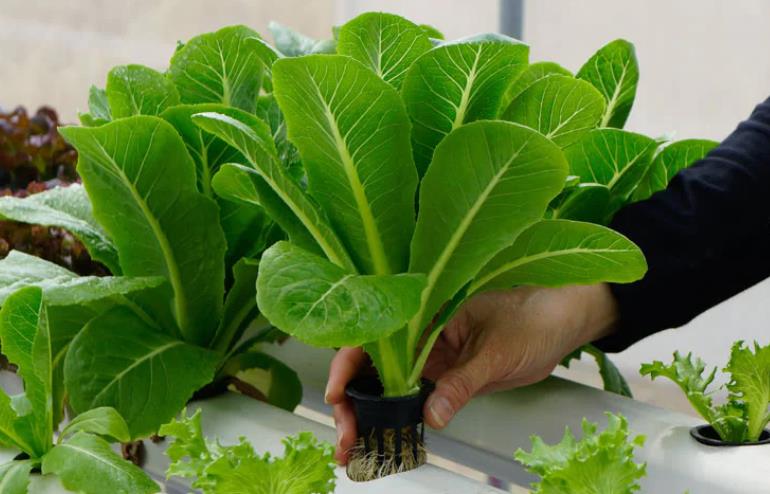
Maintaining Proper Water and Nutrient Levels
Watering Techniques for Hydroponic Spinach
Watering hydroponic spinach is a critical task that requires careful attention. Unlike traditional soil-based cultivation, hydroponics relies on a water-based medium, making watering a crucial aspect of plant care. Implement a watering schedule that ensures the plants receive an adequate supply of water without waterlogging the root system. Monitor the moisture levels in the growth medium regularly using a moisture meter or by carefully observing the plant’s growth and appearance. Adjust the watering frequency and duration based on environmental conditions and the plant’s stage of growth.
Monitoring and Adjusting the Nutrient Solution
Regular monitoring of the nutrient solution in your hydroponic system is essential to ensure optimal spinach growth. Test the solution regularly using a reliable pH meter and electrical conductivity (EC) meter to measure the nutrient concentration. Aim for a pH level of around 5.5-6.5, which is suitable for spinach growth. Adjust the pH using pH up or pH down solutions, if necessary. Similarly, monitor the EC levels to ensure an appropriate nutrient concentration. Adjust the nutrient solution strength as needed, based on the specific growth stage of the spinach plants and any observed deficiencies or imbalances.
Preventing Nutrient Deficiencies and Imbalances
Preventing nutrient deficiencies and imbalances is crucial to maintain healthy hydroponic spinach plants. Regularly inspect the plants for any signs of nutrient deficiencies, such as yellowing or discoloration of leaves. If deficiencies are identified, adjust the nutrient solution by increasing the concentration of the deficient element. However, be cautious not to overcompensate and cause nutrient imbalances. Maintain proper pH and EC levels to prevent nutrient lockout or toxicity. Regularly monitoring and adjusting the nutrient solution will help prevent deficiencies and provide the necessary nutrients for vigorous spinach growth.
Managing Pests and Diseases
Identifying Common Pests and Diseases in Hydroponic Spinach
While hydroponic spinach cultivation reduces the risk of soil-borne pests and diseases, it is still important to be vigilant and proactive in managing potential issues. Regularly inspect your spinach plants for signs of common pests such as aphids, whiteflies, or spider mites. Look for yellowing leaves, leaf curling, or visible pests on the plant surface. Additionally, keep an eye out for diseases such as powdery mildew or damping-off, which can affect hydroponic spinach. Early identification and prompt intervention are crucial for preventing the spread of pests and diseases to ensure the health of your spinach crop.
Implementing Effective Pest and Disease Control Measures
Implementing effective pest and disease control measures is essential for the success of your hydroponic spinach cultivation. Preventative measures such as maintaining a clean growing environment, practicing proper sanitation, and ensuring good air circulation can significantly reduce the risk of pests and diseases. Introduce biological pest control methods, such as beneficial insects or nematodes, to combat pests without the use of chemical pesticides. If necessary, use organic-approved pest control measures such as insecticidal soaps or natural oils. Promptly remove any infected or infested plants to prevent the spread of pests or diseases.
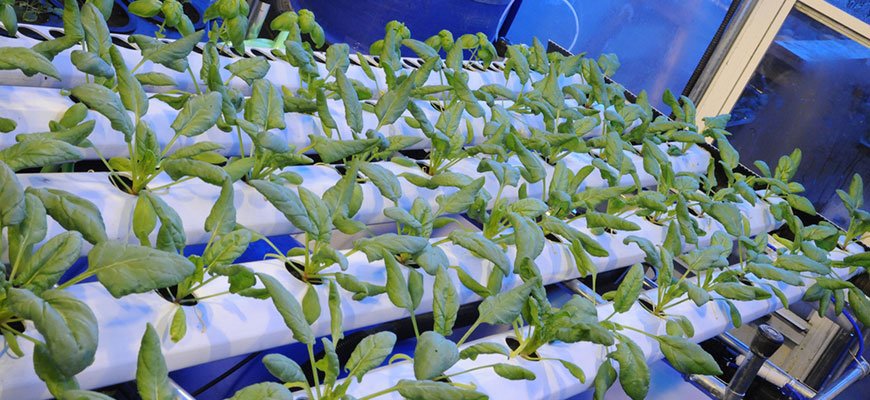
Pruning and Harvesting Hydroponic Spinach
Understanding the Importance of Pruning for Spinach Growth
Pruning is an important practice for promoting healthy growth and maximizing yield in hydroponic spinach cultivation. Regularly prune your spinach plants by removing any yellowing, damaged, or diseased leaves. This helps redirect the plant’s energy towards healthy leaf production. Proper pruning also ensures better air circulation, reducing the risk of fungal diseases. Additionally, regularly harvesting mature leaves encourages new growth and prolongs the productivity of your hydroponic spinach plants.
Harvesting Techniques for Hydroponic Spinach
Harvesting hydroponic spinach leaves can be done as soon as they reach the desired size, typically around 4-6 weeks after transplanting. Use clean and sanitized tools to harvest the leaves, ensuring that the stems are cut cleanly without damaging the surrounding foliage. Harvesting selectively can allow the plant to continue producing new leaves, enabling continuous harvesting. Start by harvesting the outer leaves first, leaving the inner leaves to grow further. Regularly harvest your hydroponic spinach to maintain the plant’s productivity and quality.
Maximizing Yield and Continuous Harvesting
To maximize yield and enable continuous harvesting, employ staggered planting or succession planting techniques. Instead of planting all your spinach seeds at once, sow a portion of the seeds every few weeks. This ensures a continuous supply of fresh spinach leaves without overwhelming your capacity for consumption or processing. Additionally, maintaining optimal growing conditions, providing adequate light, and regularly monitoring and adjusting the nutrient solution will contribute to increased yield and prolonged productivity of your hydroponic spinach plants.
Troubleshooting Common Issues
Addressing Nutrient Deficiencies in Hydroponic Spinach
Nutrient deficiencies can occasionally be encountered during hydroponic spinach cultivation. If you notice any signs of deficiencies, such as yellowing leaves, stunted growth, or leaf discoloration, take immediate action. Identify the specific nutrient deficiency through leaf symptoms and appropriate nutrient testing. Adjust the nutrient solution by increasing the concentration of the deficient element until symptoms improve. Regularly monitor the plants and nutrient solution to ensure deficiencies are addressed promptly and do not hinder the growth and development of your hydroponic spinach.
Dealing with Temperature and Humidity Fluctuations
Temperature and humidity fluctuations can pose challenges for hydroponic spinach cultivation. Inconsistent temperatures can lead to stress on the plants and impact growth. Maintain stable temperatures within the recommended range for spinach cultivation, and implement environmental controls, such as fans or heaters, to regulate temperature variations. Fluctuations in humidity levels can also affect plant health and create conditions favorable for diseases. Install humidity controls, such as dehumidifiers or humidifiers, to maintain the desired humidity range. Regularly monitor and adjust environmental conditions to minimize temperature and humidity fluctuations for optimal hydroponic spinach growth.
Growing hydroponic spinach can be a rewarding and efficient way to cultivate this nutritious leafy green. By selecting the right spinach variety, creating an ideal hydroponic system, preparing the growing environment, providing proper nutrients, germinating seeds successfully, transplanting seedlings, and maintaining optimal water and nutrient levels, you can enjoy a bountiful harvest of fresh, healthy spinach. By managing pests and diseases effectively, practicing pruning and harvesting techniques, troubleshooting common issues, and promoting continuous growth, you can optimize your hydroponic spinach cultivation and enjoy a sustainable source of this versatile and nutritious vegetable.
